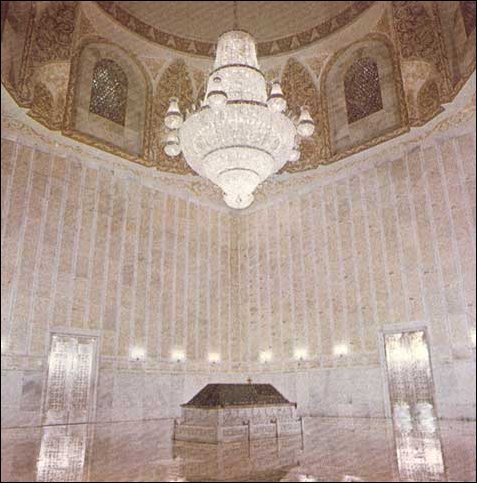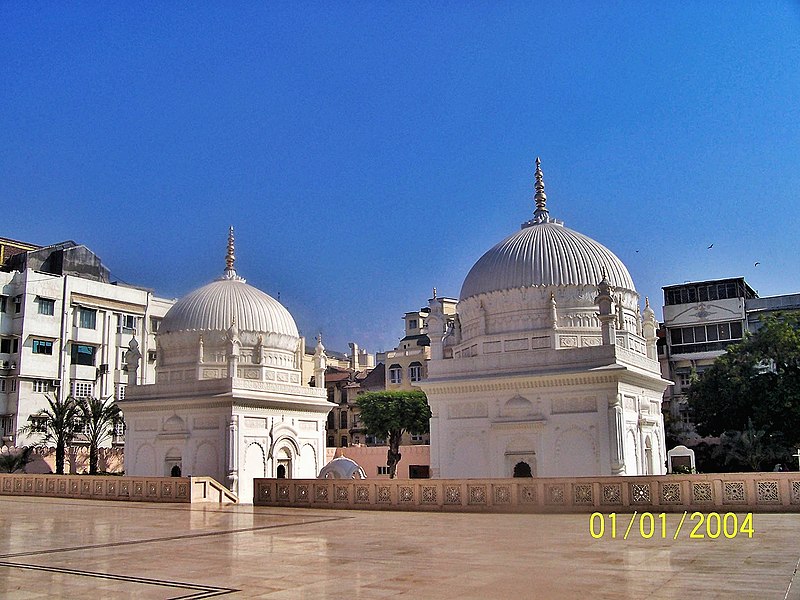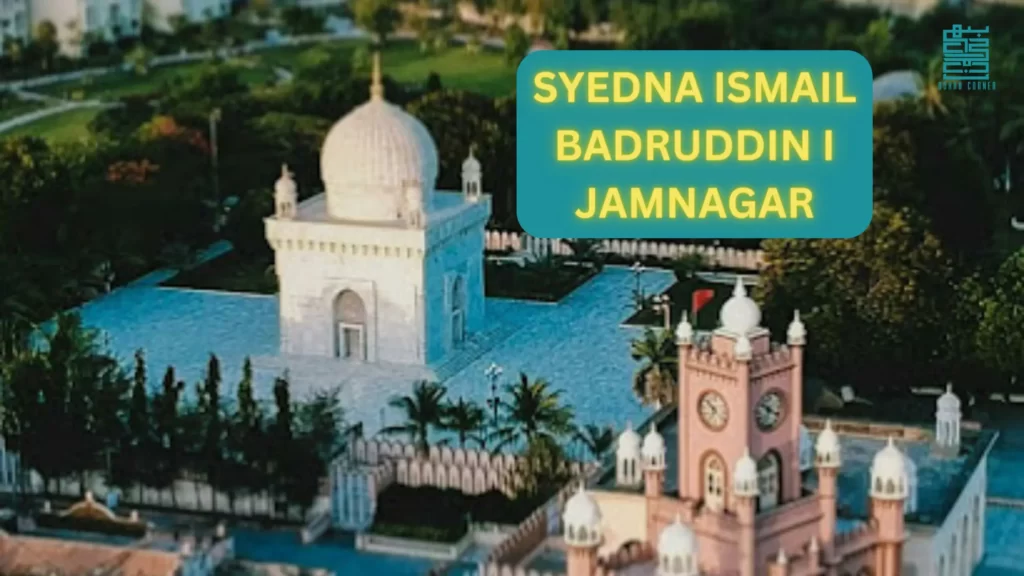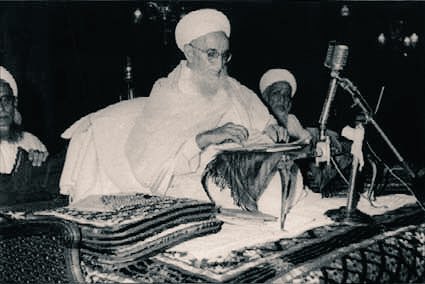
51st al-Dai al-Mutlaq
His Holiness Dr. Syedna Taher Saifuddin was born in Surat on August 5th, 1888. He is the 51st al-daʿi al-mutlaq and leader of the Dawoodi Bohra community. He is the predecessor and father of the 52nd daʿi the late his Holiness Dr. Syedna Mohammed Burhanuddin and grandfather of the current His Holiness Dr. Syedna Mufaddal Saifuddin, the present and 53rd incumbent of the office of al-daʿi al-mutlaq.
EARLY LIFE AND WORK
From his very childhood, he received an excellent education in the holy books of Islam, history, and Arabic literature. Heir to a heritage of spiritual thought and practice, philosophic inquiry, scholarship, and administrative skills going back centuries, in 1915 His Holiness assumed charge of the pontifical office of the Dawoodi Bohra community, known as Dawat-e-Hadiyah, at the age of 28. Although young in years, he was rich in attainments like his illustrious predecessors.
At the time of His Holiness’ ascension, the general condition of affairs among the community was fraught with challenges and its coherence was being undermined by a discordant faction within the more significant majority. His Holiness assiduously set himself to the task of bringing about unity and advancement of his community by a constructive approach to the problems.
It required the intermingling of some of the most outstanding qualities of human nature—talent, imagination, tact, sympathy, tenacity, – to rehabilitate a divided community. He was subjected to several lawsuits, a few of which had even gone to the privy council.
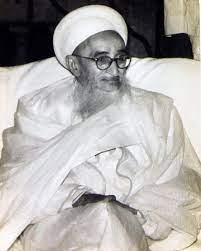

EDUCATION
His Holiness was essentially a scholar and a teacher, born as well as made by dint of diligence and perseverance. Among a plethora of tasks and affairs that he looked into for managing his community, his dedication to education was exemplary. In a speech at Kurnool College, he stated:
‘As I have spent most of my life in the pursuit of knowledge and its dissemination amongst those of understanding – strengthening its foundations, and beautifying its gatherings – I have found nothing more important, pleasant, or agreeable than the hours and days that have passed in this noble and exalted endeavor.’
A major portion of his day’s routine was devoted to teaching and expounding the tenets of the faith. Added to his duties to the community, His Holiness also served as the Chancellor of Aligarh Muslim University for four consecutive terms. His extraordinary command over the Arabic language and excellence in its literature is evident in the 49 epistles he authored and more than 10,000 verses that he composed throughout his tenure. He is credited with the establishment of 350 co-educational institutes in various parts of the world where his community resided and the renovation of Aljamea-tus-Saifiyah, the community’s premier seat of learning in Surat.
By the Prophetic tradition which makes the pursuit of knowledge obligatory upon every Muslim man and woman, he encouraged members of his community to pursue a well-rounded education and even to go abroad for higher educational pursuits.
The Dawoodi Bohras are a community devoted to trading and business and for generations have diversified themselves in both scope and geography. His Holiness being the spiritual head of his community was also a Bohra, and thus possessed all those qualities which were inherent in his community. Merchants, traders, and industrialists sought his counsel because they recognized in him a native genius, enriched by long years of varied experiences from around the world. Being a spiritual man, His Holiness never neglected the material and mundane aspects of human life. He was very solicitous about his followers being happy and prosperous whilst also upholding the tenets of their faith.
A LEADER FOR HUMANITY
Although His Holiness was the leader of a minority in India, he maintained amicable relations with the highest leadership of his time. The revered Indian icon of freedom, Mahatma Gandhi, was close to him and had once called upon him at his residence at Saifee Mahal to seek consultation before departing for the Second Round Table Conference in London.
Similarly, the first Prime Minister of India, Pandit Jawaharlal Nehru frequently met with His Holiness and upon his invitation inaugurated the community’s premier educational institute, Aljamea-tus-Saifiyah in Surat. He also attended His Holiness’ dedication of Saifee Villa to the nation. Saifee Villa was the landmark property owned by His Holiness where Gandhiji had taken lodgings on his historic Salt March (also known as Dandi March) in 1930.
On the occasion of the celebrations of His Holiness’ Golden Jubilee, the honorable S. Radhakrishnan, who served as the second President of India, had the following to say:
‘I do not doubt that your great leader who has guided your destiny for the last fifty years and who combines in himself spiritual dedication and social humanism will do his utmost to work for the consolidation of society, for the bringing together of man and for making this world a home of humanity.’
His Holiness era was an epoch-making period for his community but was also interspersed with critics of all kinds. The chief accusation against him was his so-called unbending orthodoxy, his rigid insistence on the observance of all the old modes and injunctions of life. He was blamed for not moving with the times.
His Holiness did not believe in reformism which sought to strike at the very roots of those who set out to reform. It would inadvertently end in the destruction of the reformer as well as the reformed.
The core principles of the daʿwat remained unchanged. But all the necessary reforms required by the spirit of the times and the circumstances of the modern world had been positively adopted and introduced.
His Holiness had always been open to accepting new ideas beneficial to the prosperity of his followers whilst not compromising their core values. A distinguished ruler of an Indian state before Independence once said to His Holiness that it is necessary to move the faith with the times. In reply, His Holiness expressed his conviction in making the times move with the faith.
Great men have often resisted the current and changed its direction.
His Holiness, however, was one of those rare men who rode the current and also retained their individuality for the good of the whole community. His approach was resonant with the Fatimi philosophy stated in the Epistles of the Brethren of Purity: ‘of (safeguarding) the time-tested old and (embracing) the beneficial new.’
